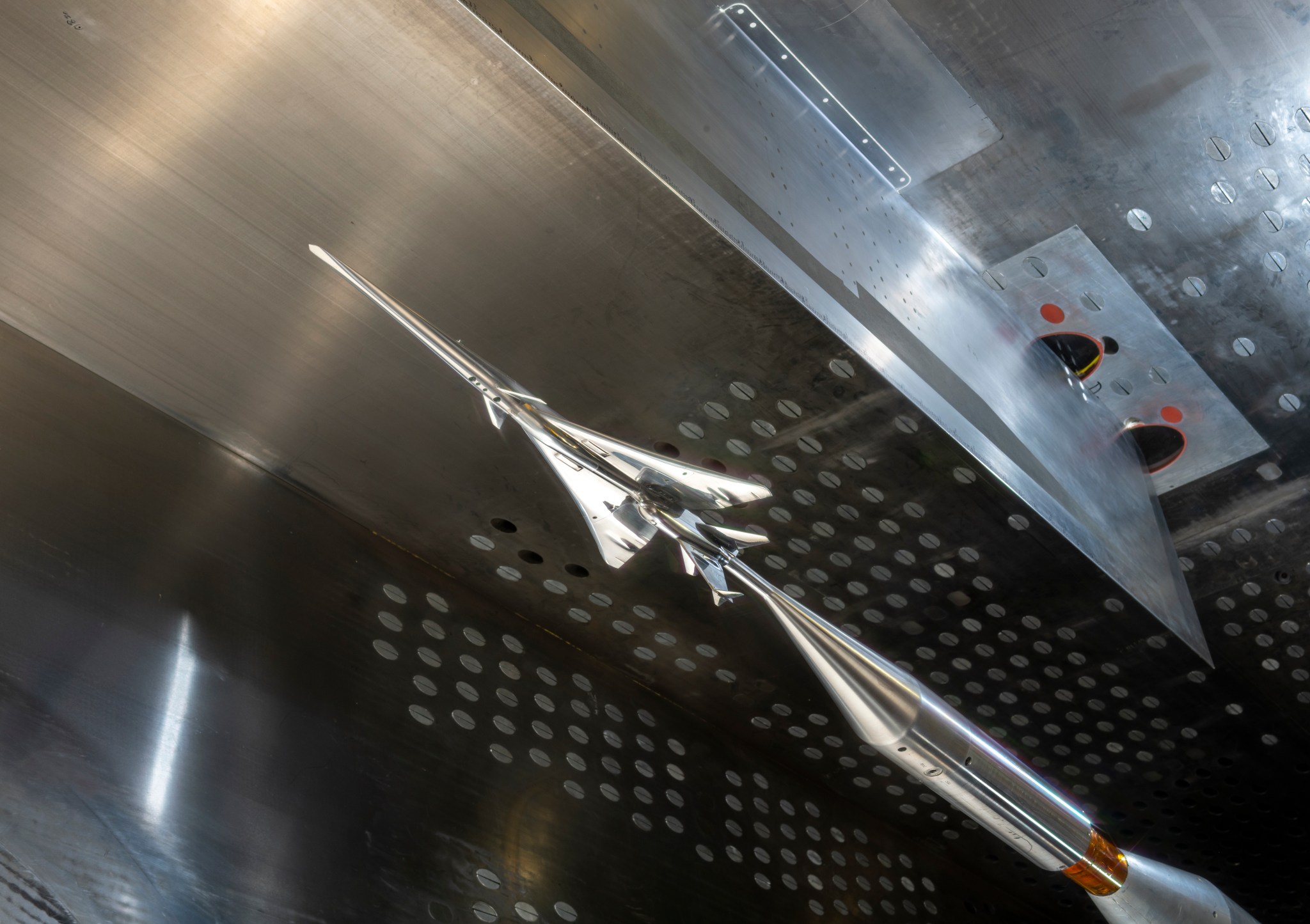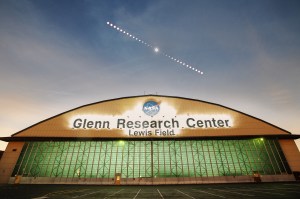
NASA hopes the ban on commercial supersonic flight over land can be lifted by replacing the loud sonic boom with a softer sonic “thump.” A sonic boom happens when the shock waves from an object traveling through the air faster than the speed of sound merge together before they reach the ground. Sonic booms generate enormous amounts of sound energy, about 110 decibels, like the sound of an explosion or a thunderclap.
Through the unique design of the X-59 Quiet SuperSonic Technology (QueSST) airplane, NASA aims to reduce the sonic boom to make it much quieter.
Engineers with the agency’s Commercial Supersonic Technology (CST) project recently used a small-scale model of the X-59 in NASA Glenn’s 8- by 6-foot Supersonic Wind Tunnel to visualize the agency’s boom-reducing technology and validate its boom-predicting capabilities.
“This is the team’s opportunity to get data at the low sound levels produced in the tunnel,” said Clayton Meyers, deputy project manager of the CST project. “It all comes down to our ability to measure the thump.”

The model—measuring about a foot and a half in length—was subjected to weeks of testing in the tunnel, producing shock waves that were captured by special cameras mounted outside the test section and by a unique sensor array inside. The unique schlieren images from the cameras provide engineers with a visualization of the shock waves and their positions as air passes around the model. The sensor provides detailed measurement of the strength of the shocks. Results from the tests are encouraging, as the shock waves produced by the model were a match, in both position and strength, to those from earlier computer models for quieter supersonic flight.
Schlieren imagery and pressure measurement are both critical to NASA’s ability to compare wind tunnel data with computer modeling. These capabilities improve the team’s capacity to understand and predict actual sonic thumps during future X-59 flights. NASA has also developed schlieren imaging capabilities for flight that will also be used during upcoming flight campaigns.
“With the X-59, we want to demonstrate that we can reduce the annoying sonic booms to something much quieter, referred to as ‘sonic thumps,’” said John Wolter, lead researcher on the X-59 sonic boom wind tunnel test. “The goal is to provide noise and community response data to regulators, which could result in new rules for overland supersonic flight. The test proved that we don’t just have quieter aircraft design, but that we also have the accurate tools needed to predict the noise of future aircraft.”
The model will travel to Tokyo in March for additional wind tunnel verification testing with the Japan Aerospace Exploration Agency and Boeing.
NASA and Lockheed Martin are currently finalizing the build of the X-59 at the Skunkworks facility in California. In late 2022, NASA and Lockheed Martin will begin initial flight tests to prove airworthiness. Following flight testing, NASA will then verify that the aircraft’s quiet supersonic technology performs in flight as designed before transitioning to the community overflight phase.
Doreen Zudell with Jimi Russell
NASA’s Glenn Research Center



























